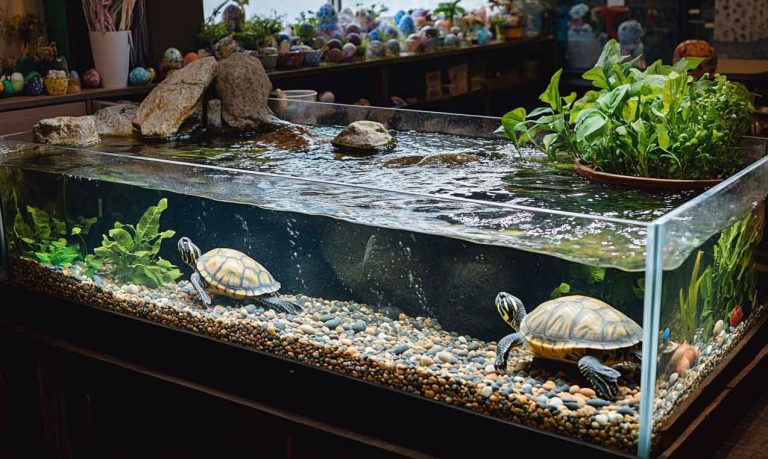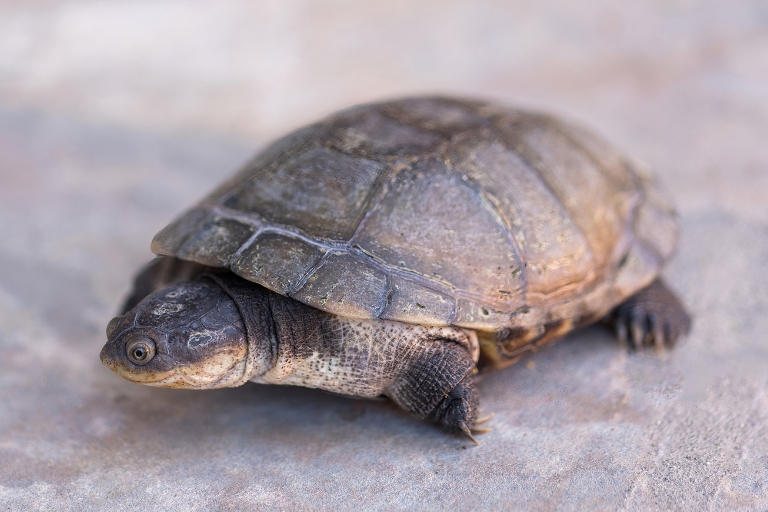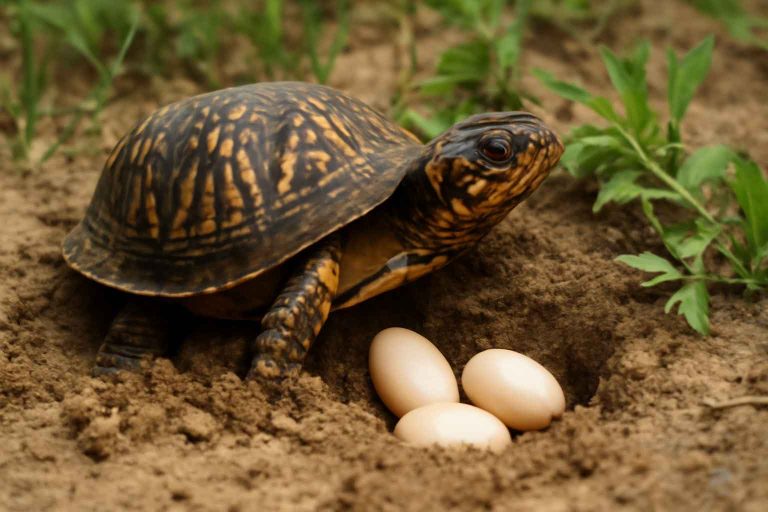Turtle Shell Rot: How To Treat Your Pet Turtle At Home?
Have you seen weird spots on your turtle’s shell? Does it smell bad? Your turtle might have shell rot. Don’t worry! I will help you fix this problem at home. Shell rot makes grey or white spots on your turtle’s shell. It smells really bad. You need to clean it and put medicine on it…
Have you seen weird spots on your turtle’s shell? Does it smell bad? Your turtle might have shell rot. Don’t worry! I will help you fix this problem at home.
Shell rot makes grey or white spots on your turtle’s shell. It smells really bad. You need to clean it and put medicine on it to make it better.
How do I treat shell rot at home? I treat shell rot by cleaning the turtle’s shell with soap and a soft brush. Then I put special cream on it two times every day. The cream is called silver sulfadiazine. I also keep my turtle dry and give it UV light. This helps the shell get better fast.
The dirty water in your turtle’s tank makes shell rot happen. Bad germs live in dirty water. These germs get into cracks in the shell and make it sick. So I clean my turtle’s tank every week to stop this problem.
I will tell you everything about shell rot. You will learn what causes it, how to spot it, and how to make your turtle healthy again. Keep reading to help your sick turtle!
What Is Shell Rot?
Shell rot is when bad germs attack your turtle’s shell. It can make your turtle very sick if you don’t fix it fast. The shell can rot on the top part or the bottom part.
Let me explain the turtle shell first. The top part is called the carapace. The bottom part is called the plastron. Shell rot can happen on both parts.
If you don’t treat shell rot, your turtle can get really sick. It can hurt the liver. It can make the turtle unable to move. It can even kill your turtle. That’s why I always watch my turtle’s shell carefully.
What Makes Shell Rot Happen?
Dirty Water Problems
The biggest reason for shell rot is dirty tank water. When I don’t clean my turtle’s tank, bad things grow in the water. Algae grows. Bacteria grows. Fungus grows too.
These bad germs wait for a chance to attack. When the turtle’s shell gets a crack or scratch, the germs go inside. Then the infection starts. The shell begins to rot.
How Shells Get Damaged
Your turtle’s shell can get hurt in many ways. Let me tell you about them:
Wrong humidity levels: Some turtles need wet air around them. If the air is too dry, their shells crack. Other turtles need dry air. If the air is too wet, their shells get soft and bend.
Fights between turtles: Boy turtles fight a lot. They fight other boys. Sometimes they even hurt girl turtles. Their fighting can crack shells.
Sharp things in the tank: Rocks with sharp edges can cut your turtle. Decorations can scratch the shell too. Always check your tank for sharp objects.
Poor basking spots: If your turtle can’t get out of the water to dry off, its shell stays wet all the time. This makes shell rot more likely to happen.

How To Stop Shell Rot Before It Starts
I do these things to keep my turtle safe from shell rot:
- Clean the tank every week: I take out all the old water. I put in fresh, clean water. I scrub the tank walls with warm water and a tiny bit of bleach. Then I rinse it really well.
- Let my turtle dry out: Every day, I let my turtle sit in a dry place. This is called dry docking. I do it for a few hours each day.
- Give UV light: My turtle needs sunlight or a special UV lamp. I make sure it gets this light every day. The light keeps the shell strong and healthy.
- Remove sharp stuff: I check my tank all the time. If I see anything sharp, I take it out right away.
- Don’t put too many turtles together: Boy turtles need their own space. I never put two boy turtles in one tank. If I have many turtles, I give them a really big tank with separate basking areas. I also make sure they have plenty of food so they don’t fight over it.
How Do I Know My Turtle Has Shell Rot?
Shell rot shows many signs. I look for these symptoms on my turtle:
Bad Smell
The first thing I notice is a terrible smell. It smells like something rotting. Sometimes I see blood or yucky liquid coming from the shell too.
Weird Colored Spots
I see strange spots on the shell. They can be white spots. They can be green spots. They can be yellow spots. These spots appear on different parts of the shell.
Red Areas Under The Shell
Sometimes I see red color under the shell plates. Or I see liquid trapped under there. This means the infection is getting worse.
Flaking Shell
The shell starts to peel off in pieces. The plates become loose. This is really bad and needs treatment fast.
Small Holes
Tiny holes appear in the shell. The shell looks like something has been eating it. It looks bumpy and uneven instead of smooth.
Soft Shell
When I touch the shell, it feels soft instead of hard. Sometimes pieces crumble off when I touch them. This is very serious.
If I see any of these signs, I start treatment right away. The faster I act, the better my turtle will get.
How To Treat Shell Rot At Home
When I find shell rot on my turtle, I move it away from the water tank first. Then I pick a treatment based on how bad the rot is. Let me tell you about all the treatments I use.
Step 1: Clean With Soap And Brush
This is what I do for mild shell rot. It’s the gentlest treatment.
Here’s how I do it:
- I get a mild soap. Baby soap works great.
- I put soap on the sick part of the shell.
- I take a soft toothbrush. A baby toothbrush is perfect because it’s very soft.
- I gently scrub the shell. I clean off all the algae, dirt, and damaged pieces.
- I scrape out the small holes and dry white spots carefully.
- I put my turtle in the sun or under a heat lamp to dry completely.
I do this every day until the shell looks better. It usually takes about a week for mild cases.
Step 2: Clean With Antiseptic
Sometimes soap isn’t strong enough. The bad germs don’t die from soap alone. So I use special cleaning liquids that kill germs.
I use these antiseptics:
- Hydrogen peroxide
- Betadine
- Chlorhexidine solution
Here’s my cleaning process:
- First, I clean the shell with mild soap like before.
- Then I put one of the antiseptics on the shell.
- I let the shell soak in the antiseptic for ten minutes. This gives it time to kill all the germs.
- I scrub gently with a soft brush while the antiseptic is on the shell.
- I rinse everything off with clean water.
- I dry my turtle completely.
I repeat this process every day. I keep doing it until the shell rot is completely gone. This might take two to three weeks.

Step 3: Put On Antibiotic Cream
If the shell rot looks really bad, I need stronger medicine. I use antibiotic creams that kill bacteria.
The best antibiotic creams are:
- Silver sulfadiazine cream
- 2% mupirocin cream (this is antifungal)
Here’s how I apply the cream:
- I make sure my turtle is completely dry first. The cream won’t work on wet skin.
- I put a thin layer of cream on all the rotten parts of the shell.
- I do this two times every day – once in the morning and once at night.
- I keep doing this for one whole week.
- After I put the cream on, I don’t let my turtle go in water for at least one hour. This gives the cream time to soak in.
The antibiotic cream is very powerful. It kills the bad germs that are making the shell rot. I always wash my hands after touching the cream.
Extra Things That Help Healing
Besides the main treatments, I do other things to help my turtle heal faster. These tricks really work!
Dry Docking Method
Dry docking means keeping my turtle out of water most of the day. Even water turtles need to be dry docked when they have shell rot.
Here’s my dry docking schedule:
- I put my turtle in its water tank for only one hour each day.
- During this hour, my turtle can eat and poop.
- After one hour, I take my turtle out.
- I dry it off with a soft towel.
- I put it in a small water bowl or a backup tank that’s mostly dry.
- I keep my turtle this way for the rest of the day.
Dry docking helps because the bad germs can’t grow when the shell is dry. The infection heals much faster this way.
Heat Lamp And UV Light
My sick turtle needs special light. UV light is very important for healing shell rot.
Why UV light helps:
- It kills bacteria and fungus
- It helps the turtle make vitamin D
- It makes the shell stronger
- It boosts the turtle’s immune system
How I give UV light:
- I put my turtle under a UV lamp for at least 20 minutes every day.
- If the weather is nice, I put my turtle outside in real sunlight. Real sun is even better than a lamp!
- I also use a heat lamp to keep my turtle warm.
- The warmth helps my turtle’s body fight the infection better.
I never put my turtle in direct sun for too long. Too much sun can overheat it. I always provide shade so my turtle can cool down if needed.
Good Food For Healing
Sick turtles often stop eating. They lose weight and get weaker. But good food helps them heal faster.
If my turtle won’t eat:
- I try really tasty foods like live worms or small fish
- I make the food smell stronger to attract my turtle
- If my turtle still won’t eat, I might need a vet to put in a feeding tube
If my turtle is eating:
I give it a balanced diet with:
- Leafy greens: Like kale, collard greens, and dandelion leaves
- Turtle pellets: Special food made just for turtles
- Protein: Small pieces of cooked chicken, fish, or bugs
- Treats: Occasional fruits or special turtle treats to encourage eating
Good nutrition gives my turtle energy to fight the infection. A healthy diet makes the immune system stronger.
Moisturizing The Shell
After my turtle’s shell heals, I put special oil on it. This keeps the shell healthy and shiny.
Important things about moisturizing:
- I never use coconut oil. It traps dirt and can cause problems.
- I use special turtle shell conditioner or reptile moisturizer.
- I put it on gently with a soft cloth.
- This removes any leftover dirt and makes the shell look nice.
- It also protects the shell from future damage.
I only moisturize after the infection is completely gone. Never put oil on an infected shell!
When Do I Need A Vet?
Sometimes shell rot is too serious for home treatment. I watch for these warning signs that mean I need to take my turtle to the vet right away.
Serious Symptoms
The infection won’t go away: If I’ve been treating my turtle at home for two weeks and it’s not getting better, I need a vet.
Bleeding under the skin: If I see blood in the tissue under the shell, this is very serious.
Loose bones: When I’m cleaning the shell, if bones feel loose or wiggly, I stop right away and call the vet.
Pus coming out: If I see yellow or green pus oozing from the wound, the infection is very bad.
Maggots in the wound: This is the worst sign. Maggots mean the flesh is dying. I need emergency vet care immediately.
My turtle seems to be in pain: If my turtle won’t move, won’t eat, or cries when I touch the shell, it might have a deep infection inside the shell.
What Will The Vet Do?
The vet has stronger treatments than I have at home. Here’s what happens:
Injection medicine: The vet will give my turtle a shot of powerful antibiotics. The medicine usually used is called ceftazidime. This goes into the bloodstream and fights infection from inside the body.
Keep using cream: The vet will tell me to keep putting antibiotic cream on the shell too. This attacks the infection from outside.
Special care instructions: The vet might tell me special things to do at home. I always follow these instructions exactly.
Quick results: If I take my turtle to the vet early enough, the infection can be cured in just a few days with the strong medicine.
Don’t wait too long to see the vet. Shell rot can kill your turtle if it gets too bad. It’s better to be safe than sorry!
Common Questions About Shell Rot
Let me answer questions that people often ask me about turtle shell rot.
Will Shell Rot Heal By Itself?
Mild shell rot might heal on its own eventually. But it takes a very long time. Your turtle will suffer the whole time.
Big infections won’t heal by themselves. They will get worse and worse. Your turtle could die from untreated shell rot.
I never wait for shell rot to heal on its own. I always start treatment as soon as I see it. This is much kinder to my turtle and works much faster.
Can Other Turtles Catch Shell Rot?
Yes! Shell rot is contagious. The bad germs can spread to other turtles.
If one of my turtles has shell rot, I do these things:
- I move the sick turtle to a separate tank right away
- I clean the main tank really well with bleach and water
- I check all my other turtles for signs of shell rot
- I don’t put the sick turtle back until it’s completely healed
Important warning: Turtles carry a germ called salmonella. This germ can make people sick too. I always wash my hands really well after touching my turtles. I use soap and warm water for at least 20 seconds.
How Long Does Shell Rot Take To Heal?
The healing time depends on how bad the infection is:
- Mild shell rot: 1-2 weeks with home treatment
- Moderate shell rot: 2-4 weeks with consistent care
- Severe shell rot: 4-8 weeks, often needs vet help
I’m always patient with healing. I don’t stop treatment too early. If I stop before it’s fully healed, the infection can come back even worse.
Can Shell Rot Kill My Turtle?
Yes, shell rot can be deadly if left untreated. Here’s what happens:
- The infection gets deeper and deeper into the shell
- It reaches the blood vessels and bones
- The infection spreads through the bloodstream
- It can damage the liver and other organs
- Eventually, it can cause organ failure and death
This is why I take shell rot so seriously. It starts as a small problem but can become life-threatening.
Does Shell Rot Hurt My Turtle?
Yes, shell rot is painful. Even though the shell looks hard, it has nerves. Your turtle can feel pain in its shell.
Signs my turtle is in pain:
- Not eating
- Hiding more than usual
- Moving less
- Making unusual sounds
- Pulling away when I touch the shell
I always treat shell rot as quickly as possible to reduce my turtle’s suffering.
My Final Tips For You
I want to make sure your turtle gets better. Here are my most important tips:
Prevention Is Best
The best treatment is preventing shell rot in the first place. I keep my turtle’s tank super clean. I give it UV light every day. I let it dry out regularly. These simple things stop most shell rot before it starts.
Start Treatment Early
The moment I see any sign of shell rot, I start treatment. Small problems are easy to fix. Big problems need vets and strong medicine. Early treatment saves time, money, and suffering.
Be Consistent
I don’t skip days of treatment. If I’m supposed to clean and apply cream twice a day, I do it twice a day. Every day. Until the shell is completely healed.
Consistency is the secret to success. Half-hearted treatment doesn’t work.
Watch For Warning Signs
Even after treatment, I keep watching my turtle’s shell. Sometimes shell rot tries to come back. If I see it starting again, I restart treatment immediately.
Don’t Give Up
Healing takes time. Some days it might not look like anything is getting better. But I keep going. Most shell rot can be cured with patient, consistent care.
Your turtle is counting on you. With the right treatment, your turtle can recover completely and live a long, healthy life.
Wrapping It Up
Shell rot is a serious problem, but you can fix it! I’ve shown you everything you need to know:
- Shell rot comes from dirty water and damaged shells
- Look for bad smells, weird spots, and soft areas on the shell
- Clean the shell with soap or antiseptics
- Use antibiotic cream for serious infections
- Dry dock your turtle and give it UV light
- Feed your turtle healthy food
- See a vet if the infection is severe
Remember, water turtles are more likely to get shell rot than land turtles. Their shells stay wet more, which helps bad germs grow.
Don’t ignore shell rot. It won’t go away by itself. Start treatment as soon as you notice it. The faster you act, the faster your turtle will heal.
I hope this guide helps you save your turtle. With love and care, your turtle will be healthy and happy again soon!







